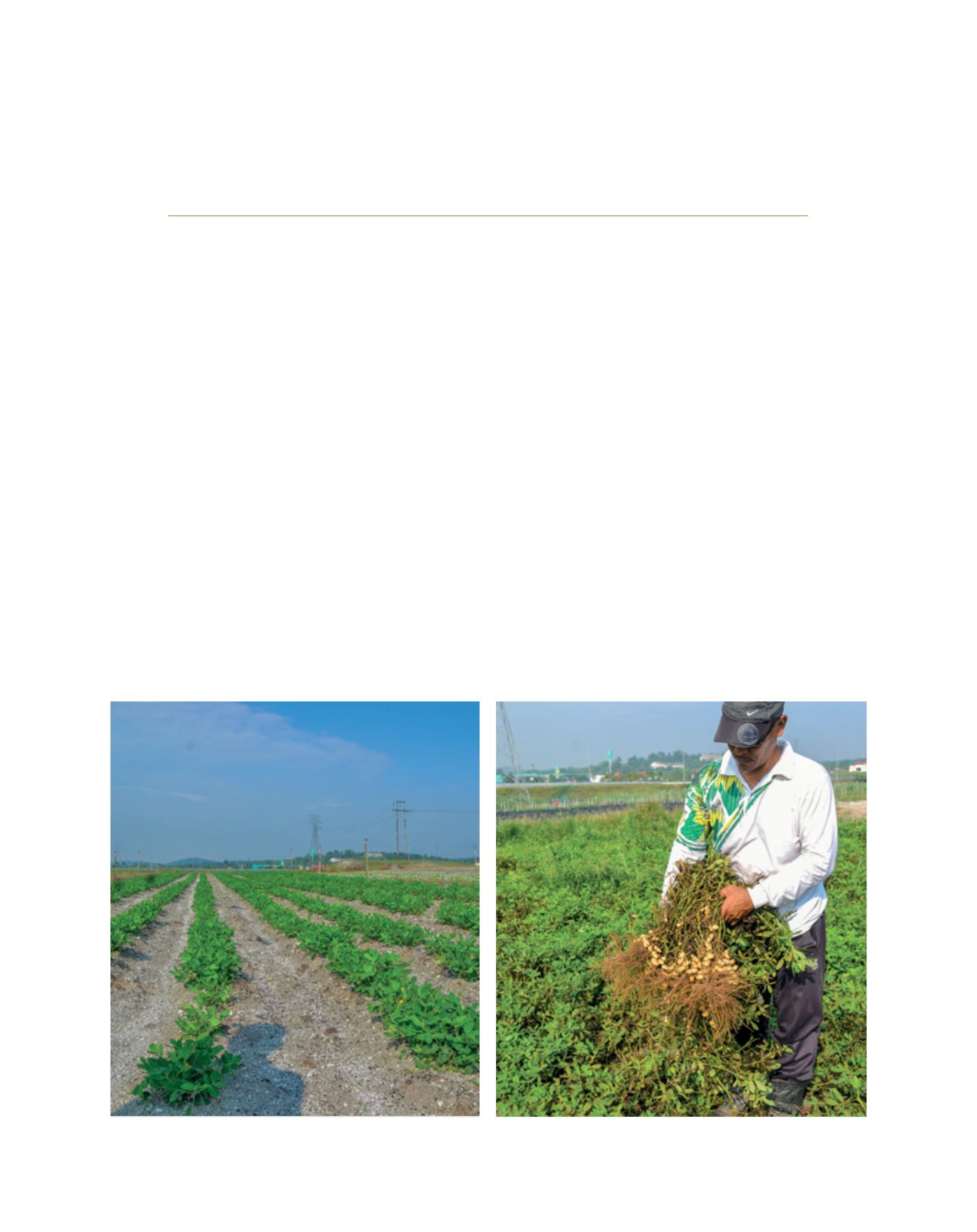

[
] 166
Returning agricultural productivity to former
tin mining land in Peninsular Malaysia
Dato Dr Sharif Haron, Dr Mohamad Roff Mohd Noor, Dr Wan Abdullah Wan Yusoff and Rohani Md. Yon,
Malaysian Agricultural Research and Development Institute
F
or more than a century, tin ore was one of the main
pillars of Malaysia’s economy which was based on
primary commodities. The prominence of tin in the
economy lasted until the world tin industry collapsed in
the mid 1980s. Following this event, the country’s tin
industry greatly reduced its activities. With the collapse
of the tin mining industry large tracts of land, which have
been used for depositing tin tailings, are left vacant. ‘Tin
tailings’ refers to the materials other than the tin miner-
als coming out of the mining process that were deposited
on the mined or unmined land adjacent to the mining
sites. Three types of tin tailings are usually found in the
tin mines: gravel (>2 mm), sand (coarse sand, 2.0-0.2
mm and fine sand, 0.2-0.02 mm), and slime (silt, 0.02-
0.002 mm and clay, <0.002 mm).
It is estimated that the total area of ex-mining land in the
whole of Malaysia is about 127,550 hectares. About 60 per
cent of the ex-mining land has been rehabilitated or reused
for other puprposes. Present uses of the ex-mining land
include housing and settlement areas, industrial estates,
agriculture, aquaculture and animal husbandry, tourism
and recreation facilities and public institutions and facilities.
Presently, about 50,000 hectares of ex-mining land
remain unused. These areas are found quite near the urban
areas. Most of these areas are tin tailings which have been
deposited with sand, therefore they are known as sand tail-
ings. Like other marginal soils, sand tailing is a problem
soil because of its poor physical and chemical properties
making it unsuitable for crop growth. The sand tailing
contains coarse sand grains with less than 5 per cent clay
content. The sandy texture of sand tailing leads to excessive
internal drainage and low water holding properties. Sand
tailing also has a high surface temperature.
Sand tailing has a pH of about 5 or less and is characterized
by a very low level of bases, phosphorus and nitrogen. Organic
Margenta groundnut planted on sand tailings, producing a yield of 300 g/clump
Images: MARDI
L
iving
L
and
















